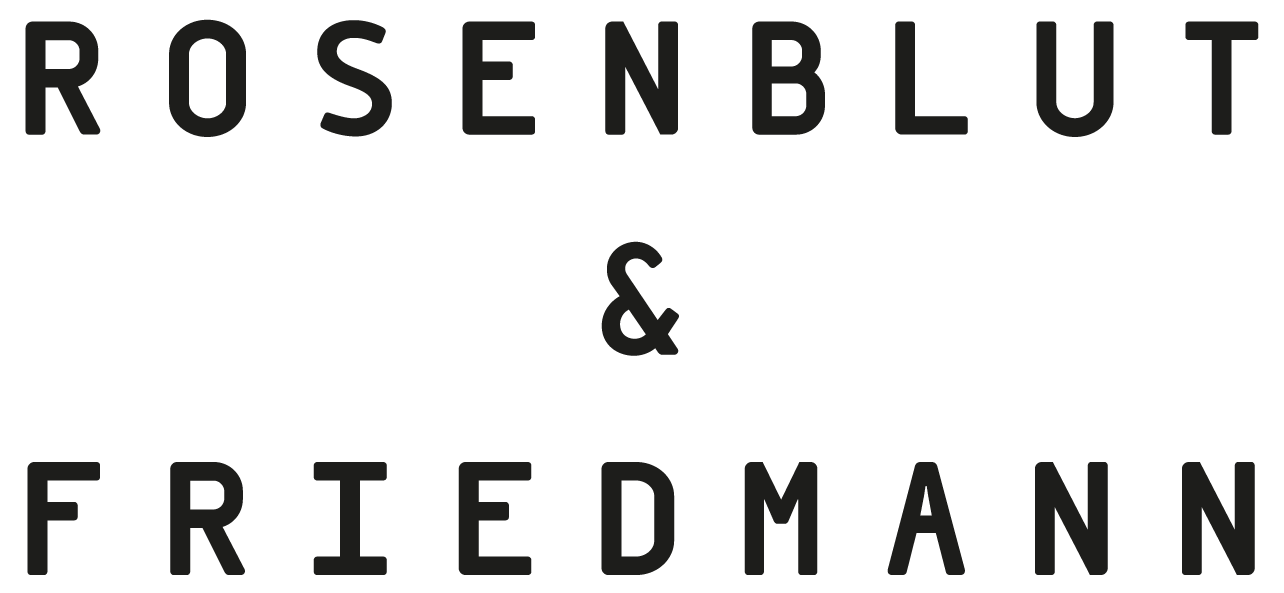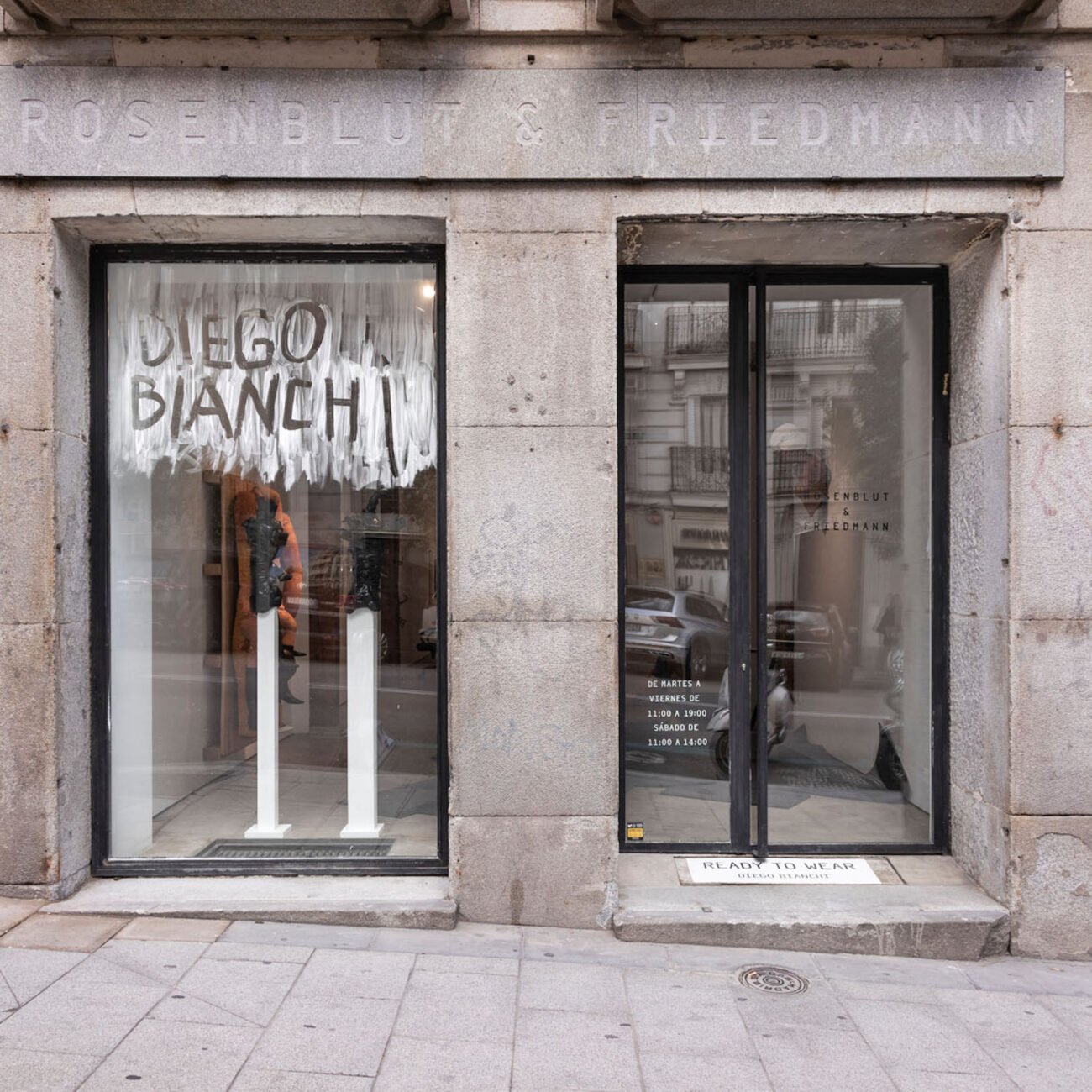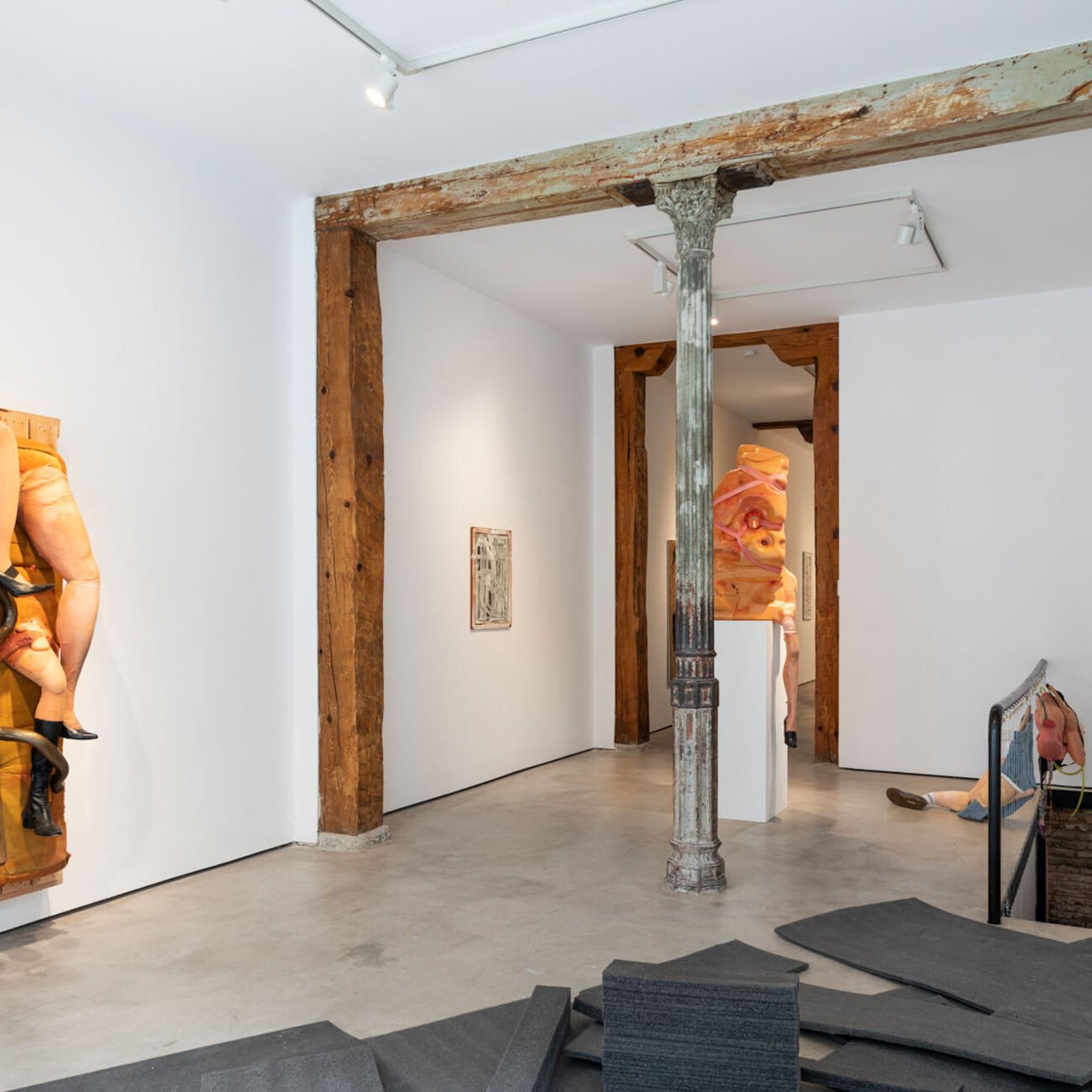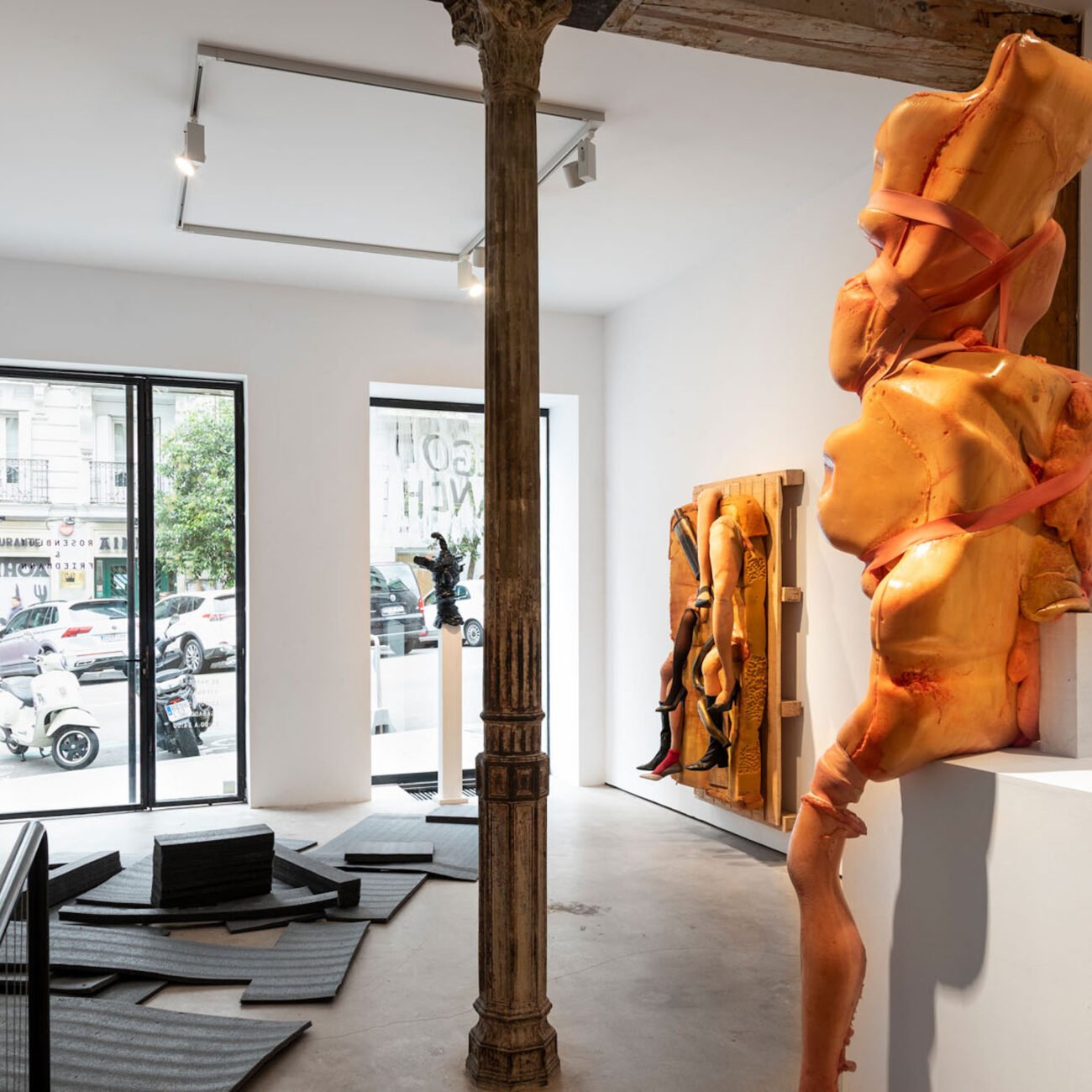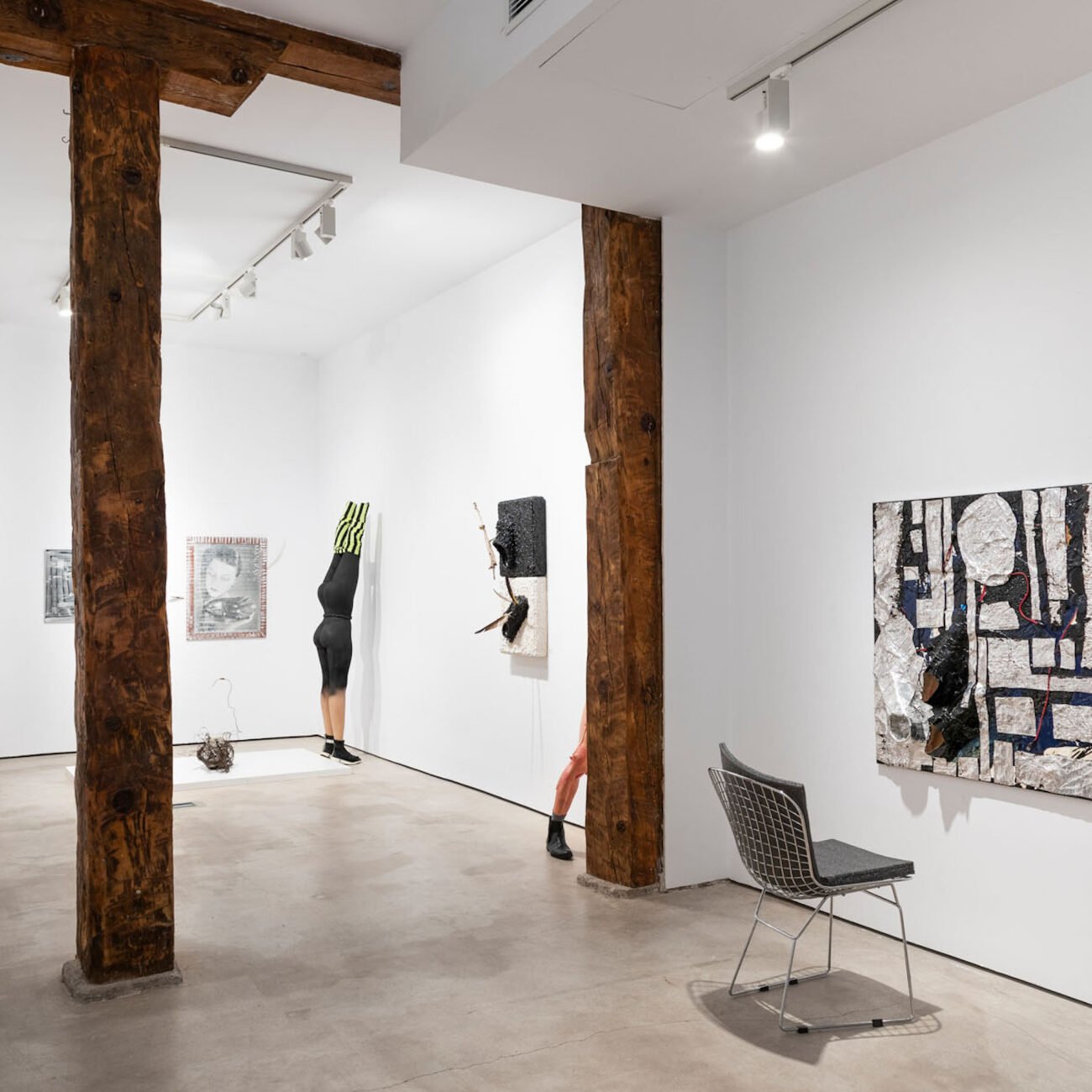Ready to Wear
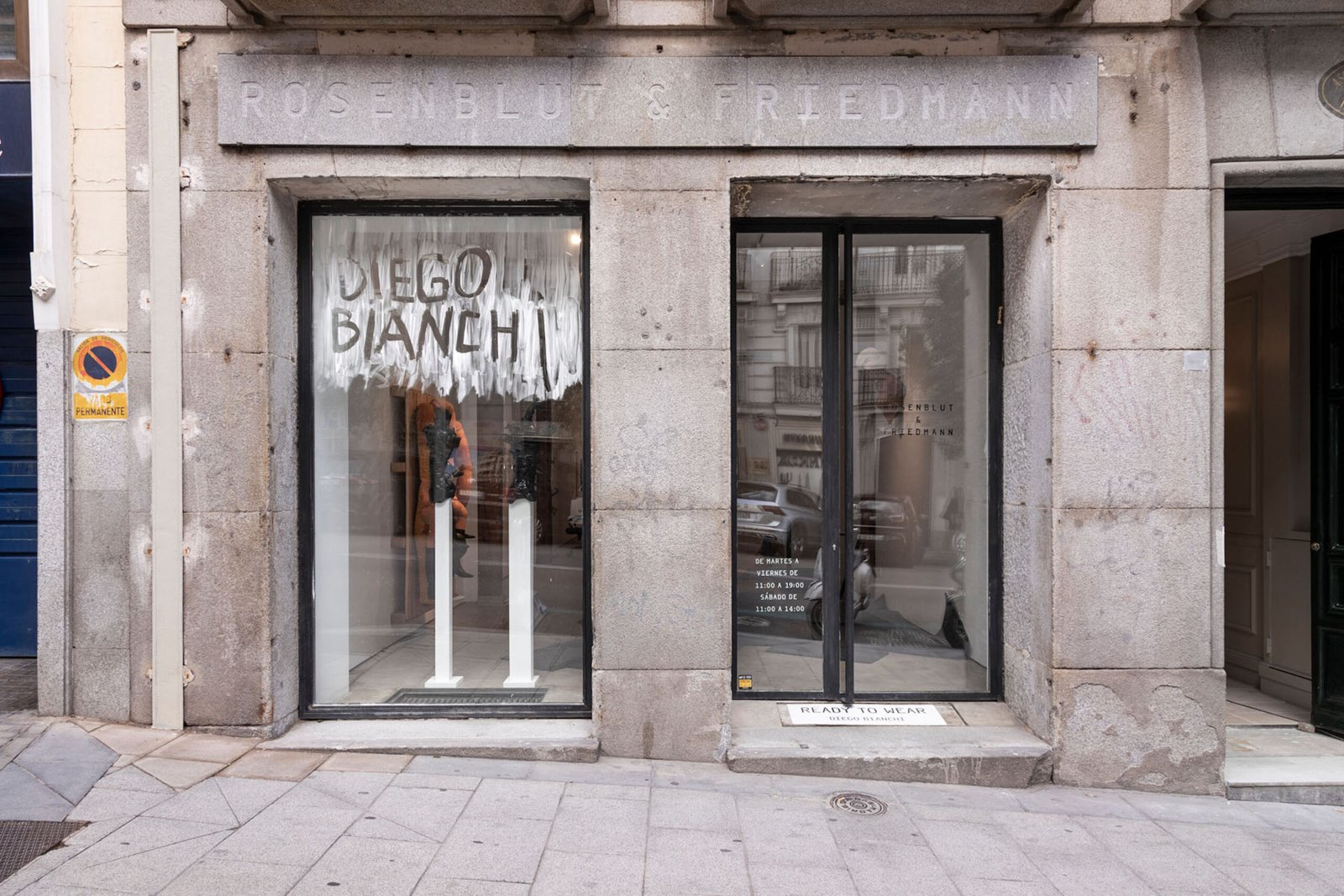
Location and Working Hours
Bárbara de Braganza 9, Madrid. Open daily 11:00-19:00 Monday and Sunday ClosedArtists
Diego Bianchi.Ready to Wear: Diego BIanchi
On an initiatory journey, a threshold is crossed to reach an alternate reality where a vision of our world is revealed to us.
Threshold
Crossing the threshold of any Diego Bianchi exhibition is never as simple as opening a door and entering. The spectator must overcome an obstacle: a ramp that must be climbed, a bar that forces him to crouch, a set of stones at the end of a staircase or a labyrinth inside a gallery; thresholds that disarm the spectator’s passivity and symbolically expose him to everyday frustrations, to prepare him physically and emotionally for what he is going to face. The use of the threshold as a work shifts the focus of attention towards the viewer. As in Marina Abramovic’s Imponderabilia (1977), when she and her partner flanked the entrance to a gallery naked, forcing viewers to brush against their bodies. In Bianchi’s words, “I think about the public, about awakening the public’s perception, about disconcerting them, in some way, to stimulate their way of reading things.” Its purpose is that the visitor does not leave the same as they entered.
The alternate reality
Once the viewer has left behind his preconceived idea of what art is, he is able to unravel the laws that organize Bianchi’s alternate reality, where beauty is not synonymous with harmony. Bianchi was never a young artist, he trained in graphic design and his first approach to art was through photography, recording corners of Buenos Aires where chance created artistic installations (a tree growing between the iron bars of a fence or a wall coated that looks like a Keith Haring drawing). That’s why it was natural that I went from collecting corners to collecting objects, things that once shared someone’s experience, their intimacy, and that ended up being discarded without regrets. Bianchi feels empathy for these objects, “as if they were lost pets,” and rescues them “in the hope of being able to redeem them.”
Marcel Duchamp was one of the first to conceive the idea that a work could be found among the everyday objects that surround us, it was enough to give it that frame. But unlike Duchamp, who found “ready works” (that’s why they are called ready-mades), for Bianchi the objects are not the work but the material with which it will be built and, for this reason, he is closer to Thomas Hirschorn than conceptual art.
They both started in graphic design and approached art after their thirties. Both, with humor and provocation, work with everyday objects that lack value, with the ruins of civilization. According to Hirschorn, “today we live in a time of incredible growth in contemporary ruins.” The achievement of both is to have reversed the passage of time, transforming ruin into creation, reordering the entropy of our world. “In my work,” says Bianchi, “there is a lot of diagramming, there are many laws, many serializations.”
In one work, six legs and an exhaust pipe seem to have fun. In another, a leg, with an elegant black shoe, merges with the gas tank of a car. There are no pure and clean forms, but fragments of objects and bodies that make up new organisms. For Freud, there are two forms of the uncanny: when something that should not move moves and when a human body does not move. Bianchi plays with both aspects, blurring the limits between the appearance of organic and inorganic matter, forcing us to reflect on how much of a part of our own body the objects that surround us are. Then, those humanoid machines and mechanized humans take on a chilling familiarity. “I like to use bodies as objects,” he notes, and he likes to use objects as bodies. Paraphrasing Pablo Schanton, Bianchi’s work embodies the sculptures and sculpturizes the bodies. The night we met with Bianchi to talk about this exhibition, while we were walking through the center of Santiago, he suddenly noticed the small arm of a doll on the ground, without its body; He took it as if it were a wounded bird, with affection, and put it in his pocket with the certainty that it would give it a new life among one of his works.
The vision
Does Bianchi dream of the art that will come after the apocalypse? Faced with his work, it is inevitable to think of the mythological bestiary that appears in Hieronymus Bosch’s The Garden of Earthly Delights, as if Bianchi transformed these beings with multiple limbs into the figures of a technological bestiary. Bianchi’s post-apocalyptic scene is cluttered with industrial waste (cables, keyboards, car parts, shoes, putty, latex, foam, etc.), but his work is not a desperate lament about the apocalyptic future to which we are heading, but, On the contrary, it is rather a hymn to a hopeful post-apocalyptic era. When there is nothing left but a shattered civilization, an overabundance of useless objects scattered over the face of the earth, posthumans will make art with the remains they find. And it will be an optimistic art. And it will be an art very similar to the works of Diego Bianchi.
Alan Meller, 2023
